by Kasandra Chai Kim November 04, 2021
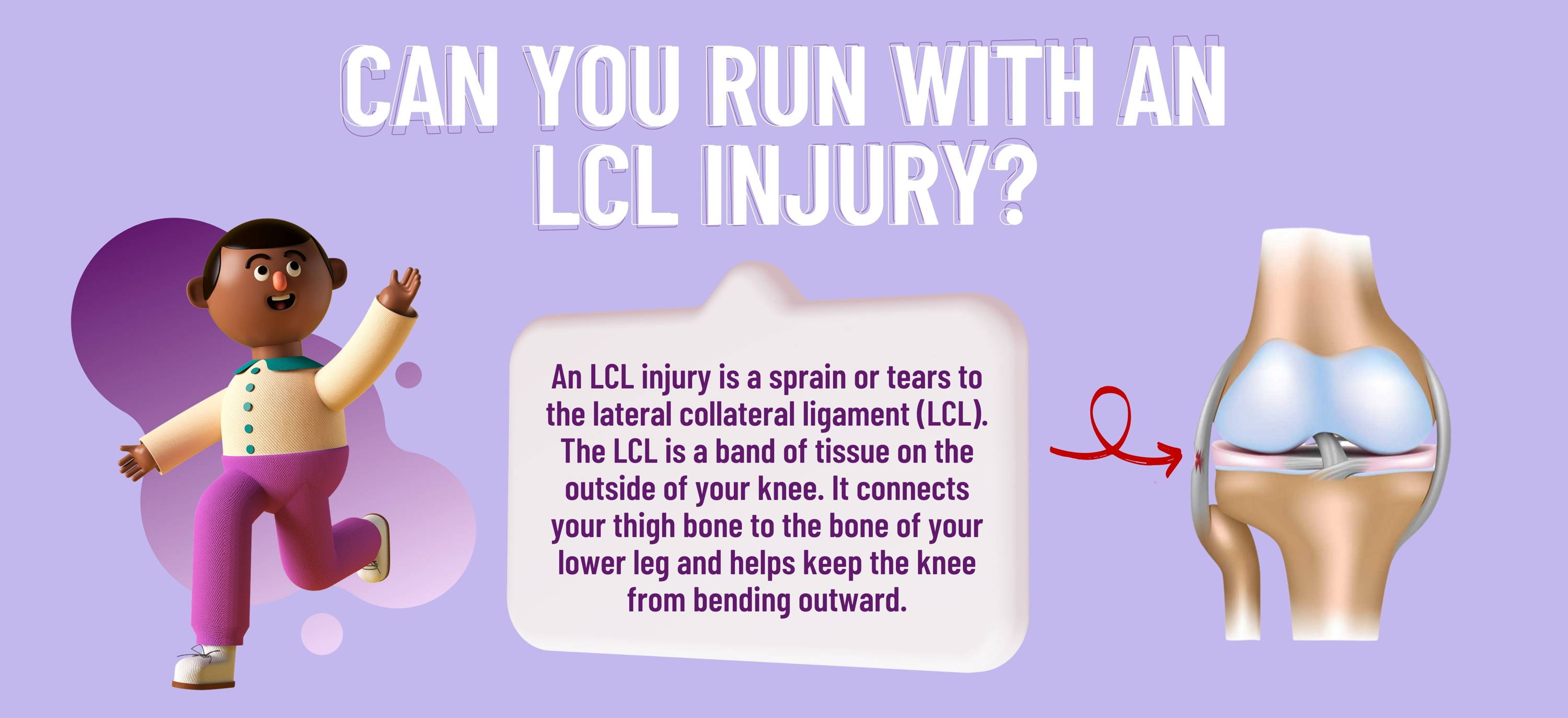
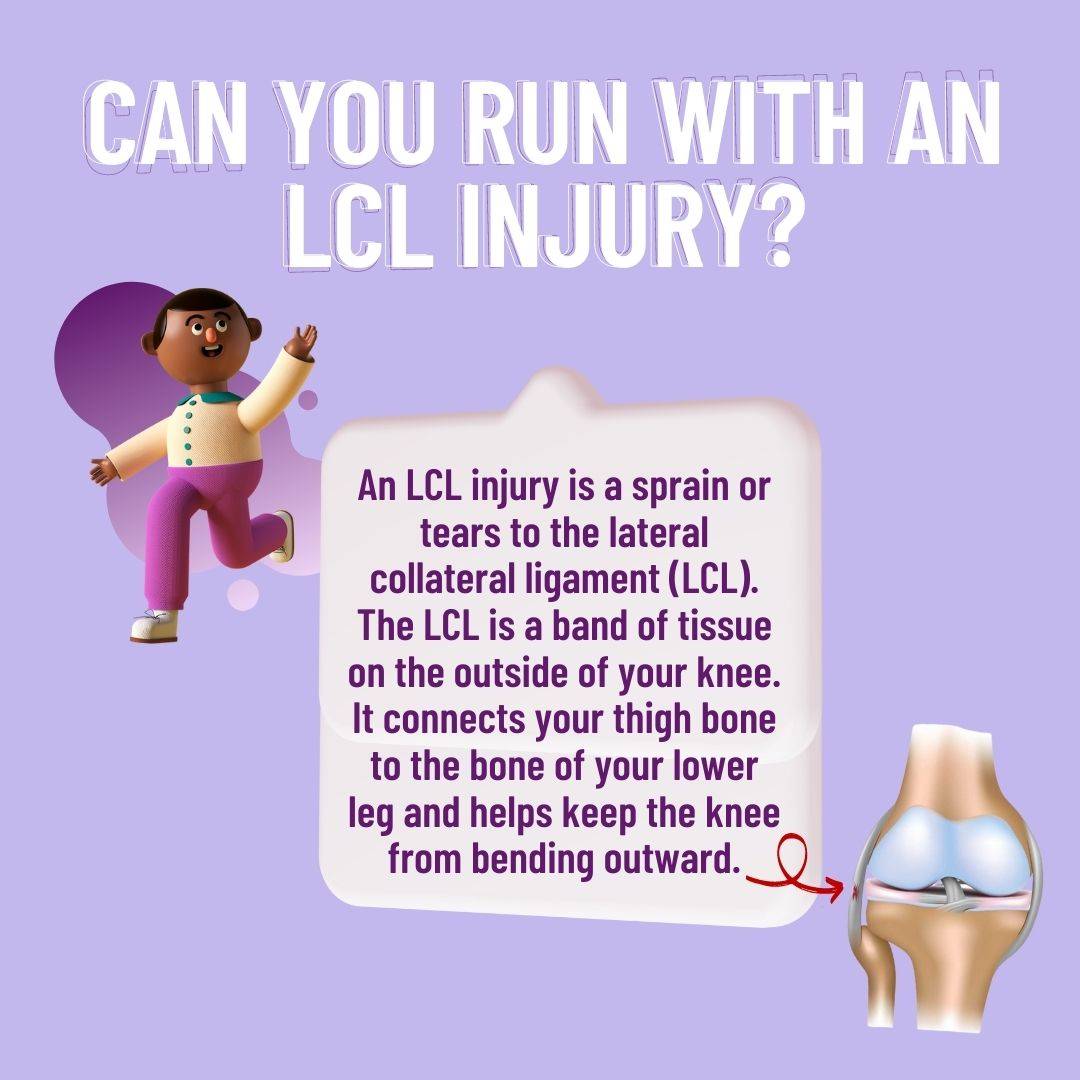
If you have suffered from an injury like the LCL, it can be hard to know your options. You may not even know that there is a way for you to run again! However, some considerations need to be made before starting up again. This article will go over those considerations so that you can get back out on the road and start running again soon!
The first consideration when returning after suffering from an injury like this one is how long it has been since your injury occurred. If it was more than six months ago, then chances are good that your knee has healed enough for running. However, if it was less than six months ago or other injuries involved in addition to just the LCL tear itself, it is recommended to see a doctor before beginning any training regimen.
It’s better safe than sorry! Once you do see a doctor, and they give them okay for physical activity (and only once they give their okay), then it is recommended slowly easing yourself back into things with walking first and gradually increasing speed as well as distance over time until reaching full capacity at around three weeks post-injury. It is strongly recommended to wear supportive shoes during all activities while continuing with exercises such as squats which strengthen muscles surrounding the knee joint to prevent future injuries from occurring due to weakness in these areas of the body also the use of Cocoon cold compress therapy after the run and recovery.
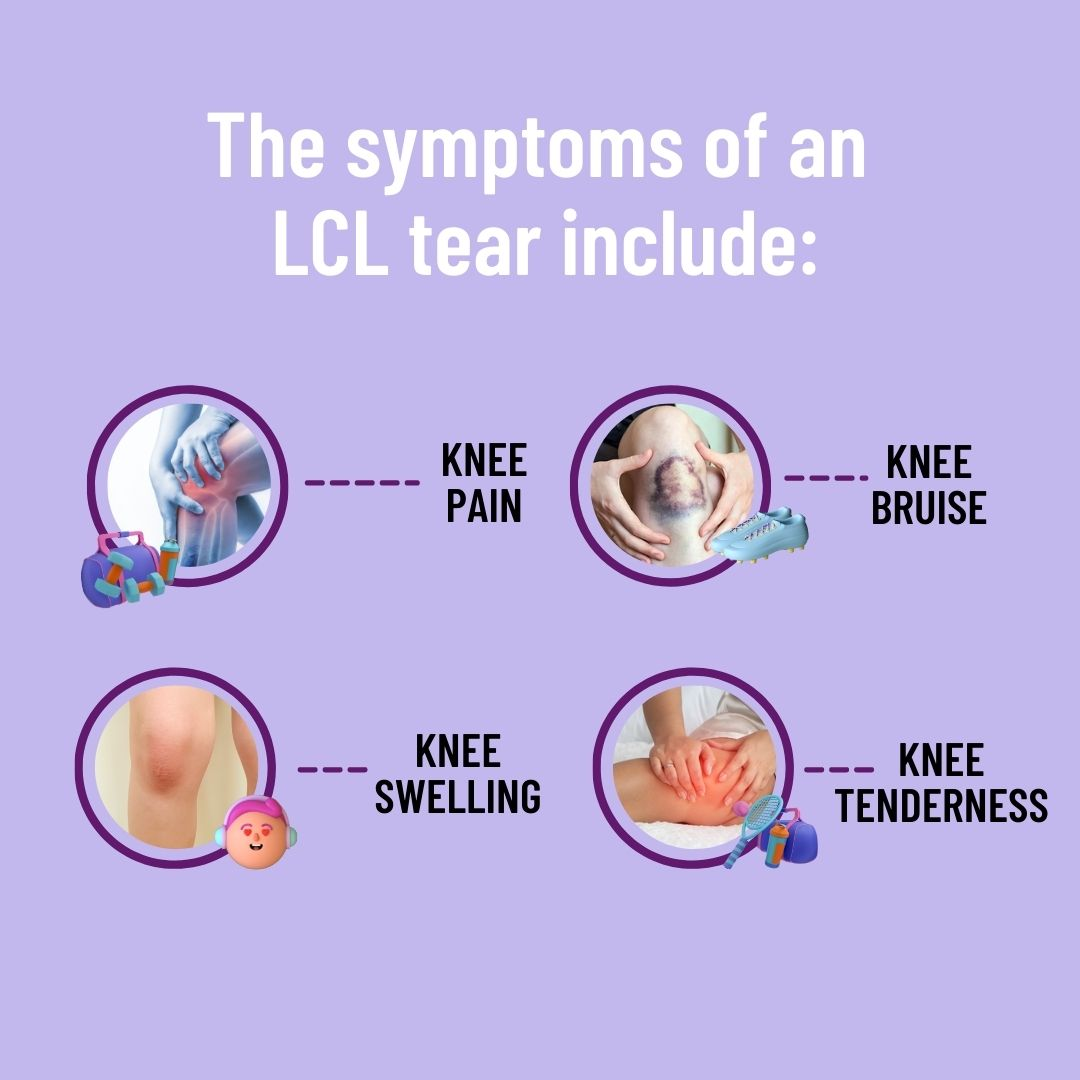
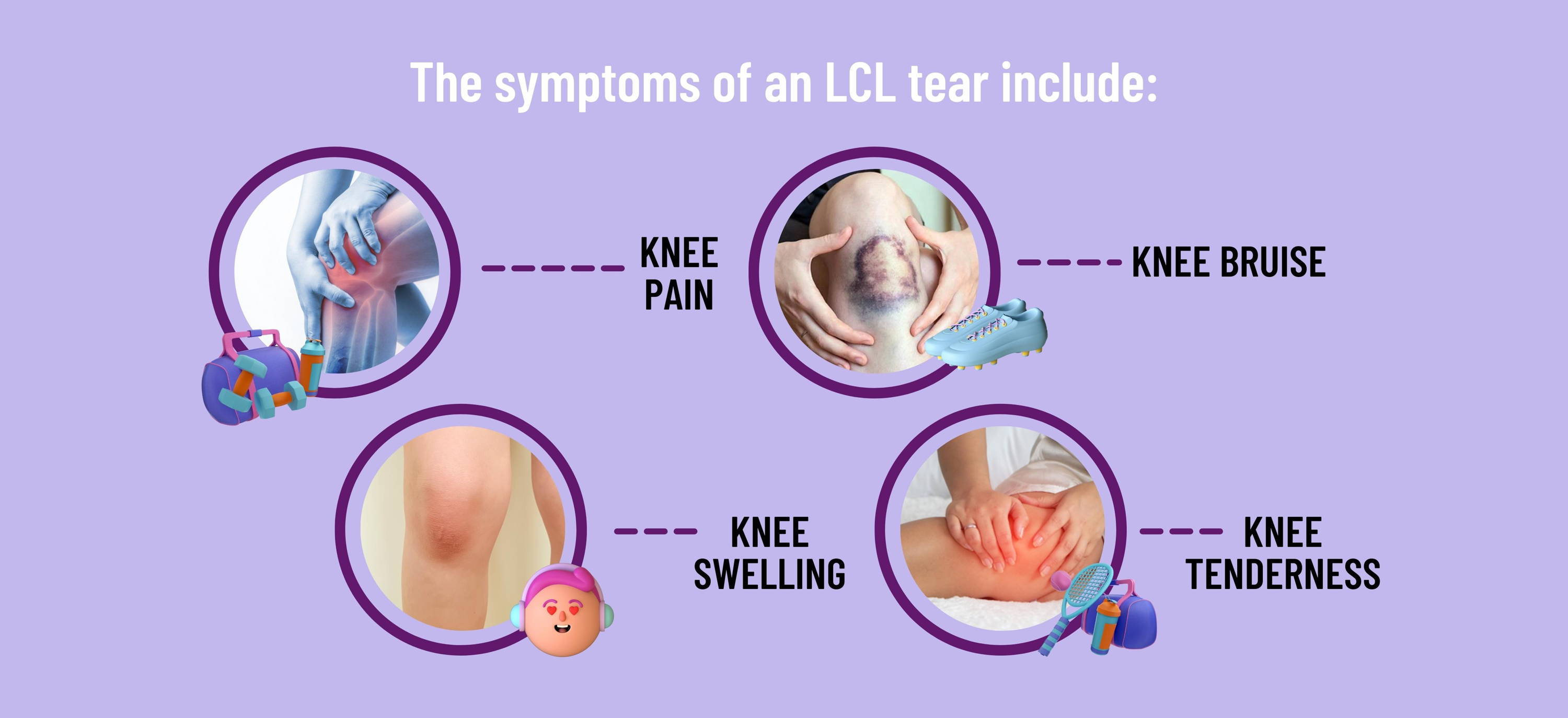
WHAT IS AN LCL INJURY?
An LCL injury can be a sprain or tear to the lateral collateral ligament is a common knee injury that can happen in any sport. This band of tissue connects your thighbone with that in your lower leg and helps keep you from bending outward when injured because it holds up several other joints nearby like PCL (posterior cruciate), MCLs (medial collaterals), and ACLs (anterior compartment). Bending inward makes things worse, so avoid doing this by keeping an eye out!
HOW IS AN LCL INJURY DIAGNOSED?
The doctor will examine you and inquire about your health history. A physical therapist may perform a variety of tests while examining the knee for signs of swelling or other problems, including X-rays or MRIs to look for stability issues with movement around neighboring joints.
These are some questions a doctor might ask you:
- When did the pain start? How and when did you detect it?
- Did you hear a “pop” when your leg was injured?
- Did you turn your leg with your foot on the ground?
- Quickly did your knee straighten out?
- Did you move in your direction swiftly when you were running?
- Did your foot get a direct hit while it was planted on the ground?
- Have you noticed any bruising or swelling around the knee in the first two to three hours after a fracture, especially when it is not severe?
- Do you experience the sensation of your knee locking, catching, buckling, or giving way when you try to utilize it?
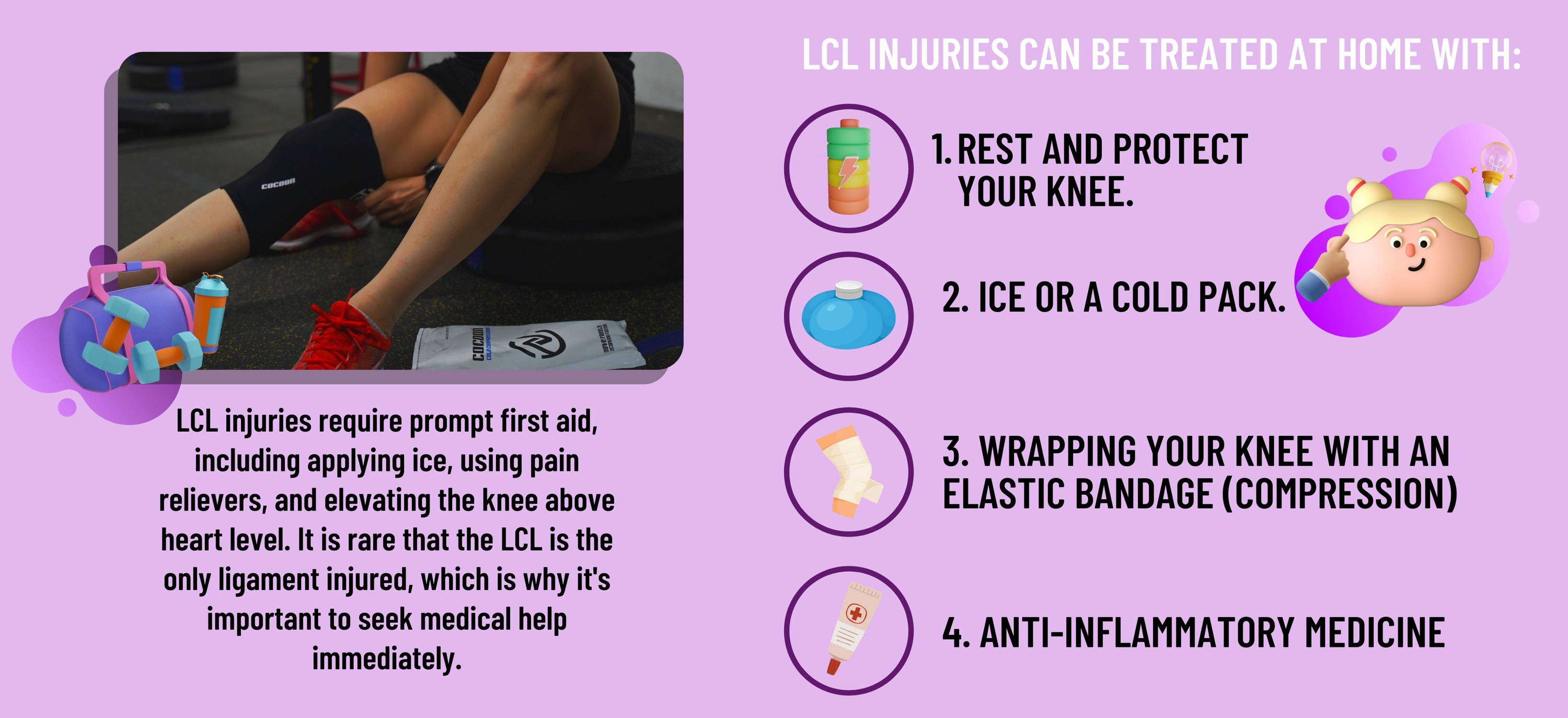
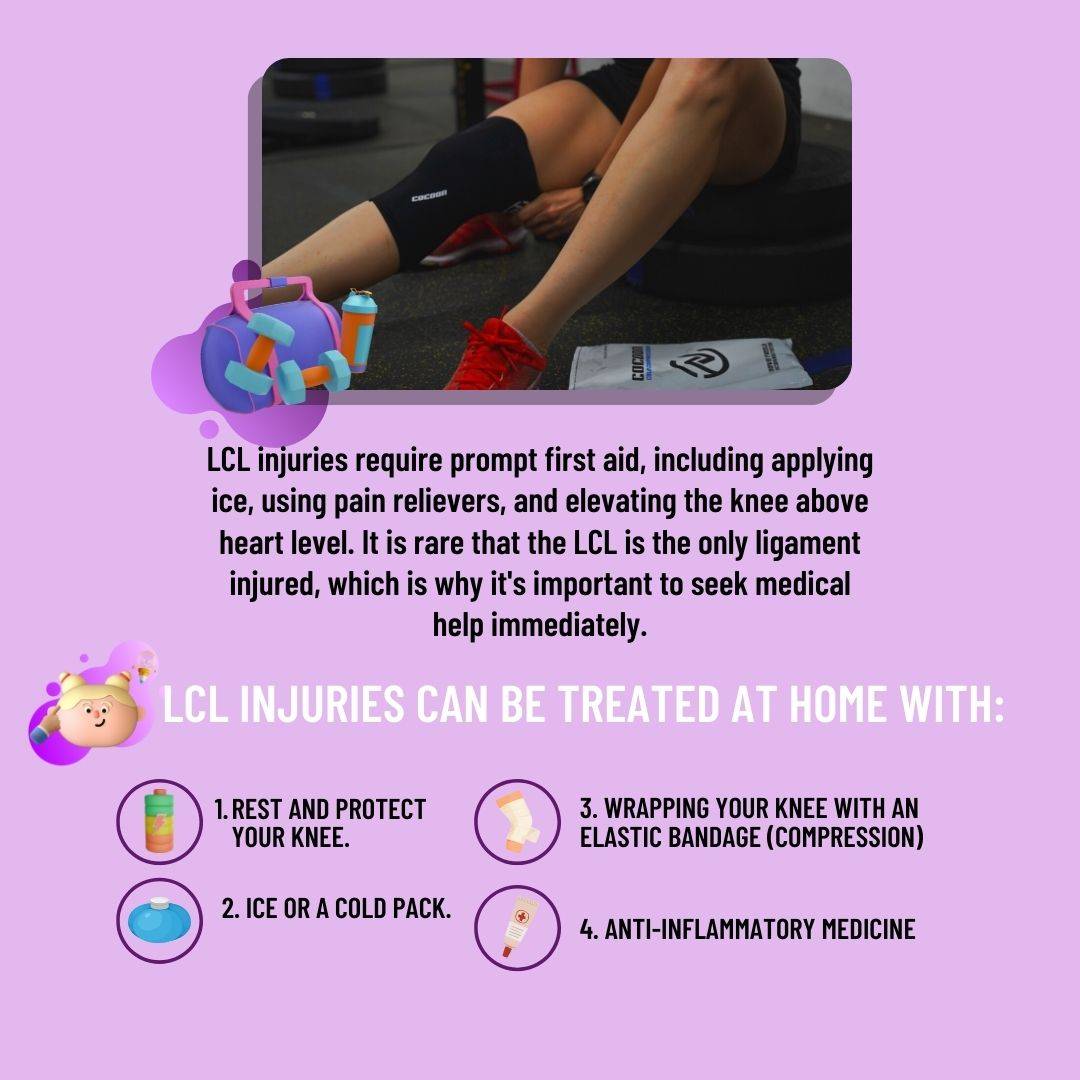
HOW CAN YOU TREAT IT YOURSELF?
Don't stress! You can take the following steps to combat body image problems and stay in shape. Acknowledge that you are not perfect, but work towards making small changes for long-term success. The best way to stay in shape is the one you have right now. That means working on what makes it tough for yourself, not vice versa!
One great idea that might help with this problem and others like eating healthy or losing weight would be incorporating strength training into your weekly routine:
lifting weights at least three days per week can do wonders when combined with a sensible diet plan. To combat the effects of aging, it is important to stay in shape like stretching before and after workouts for muscles relief; Adding strength training into your weekly routine with light weights, or bodyweight exercises such as push-ups & squats (preferably at least 3 days per week). Do these first thing upon waking up if possible!
Rest and protect your injured leg, ice or cold pack applied directly on it (not in between pants where they rub against other skin).Wearing an elastic bandage that supports compression will help reduce inflammation as well. If you have good mobility then try propping up one foot higher than its counterpart, so there is more weight off both hips while sitting upright; if not elevate by stool/cushion combo instead!
WHEN SHOULD YOU SEEK MEDICAL HELP FOR YOUR LCL INJURY?
There are a lot of DIY remedies out there for LCL injuries, but it's important to remember that medical professionals have the training and experience needed. When you're still experiencing pain after trying your methods above (or not), reach out by contacting any physical therapist to get an accurate assessment as soon as possible! These experts can work with whichever professional helps the best address all contributing factors -- which will yield better results than if nobody finds anything wrong in the first place.
YOU MAY HAVE LIMITED MOVEMENT IN YOUR KNEE, AND THE PAIN COULD RADIATE TO OTHER PARTS OF THE BODY.
That being said, it's important not to set any expectations about what kind or percentage range these injuries fall within because they can be different for everyone depending on how severe an injury is as well as whether there are additional issues like ligament damage which would require surgical repair before anything else goes into place around it with surgery-level treatment options available at our hospital if necessary!
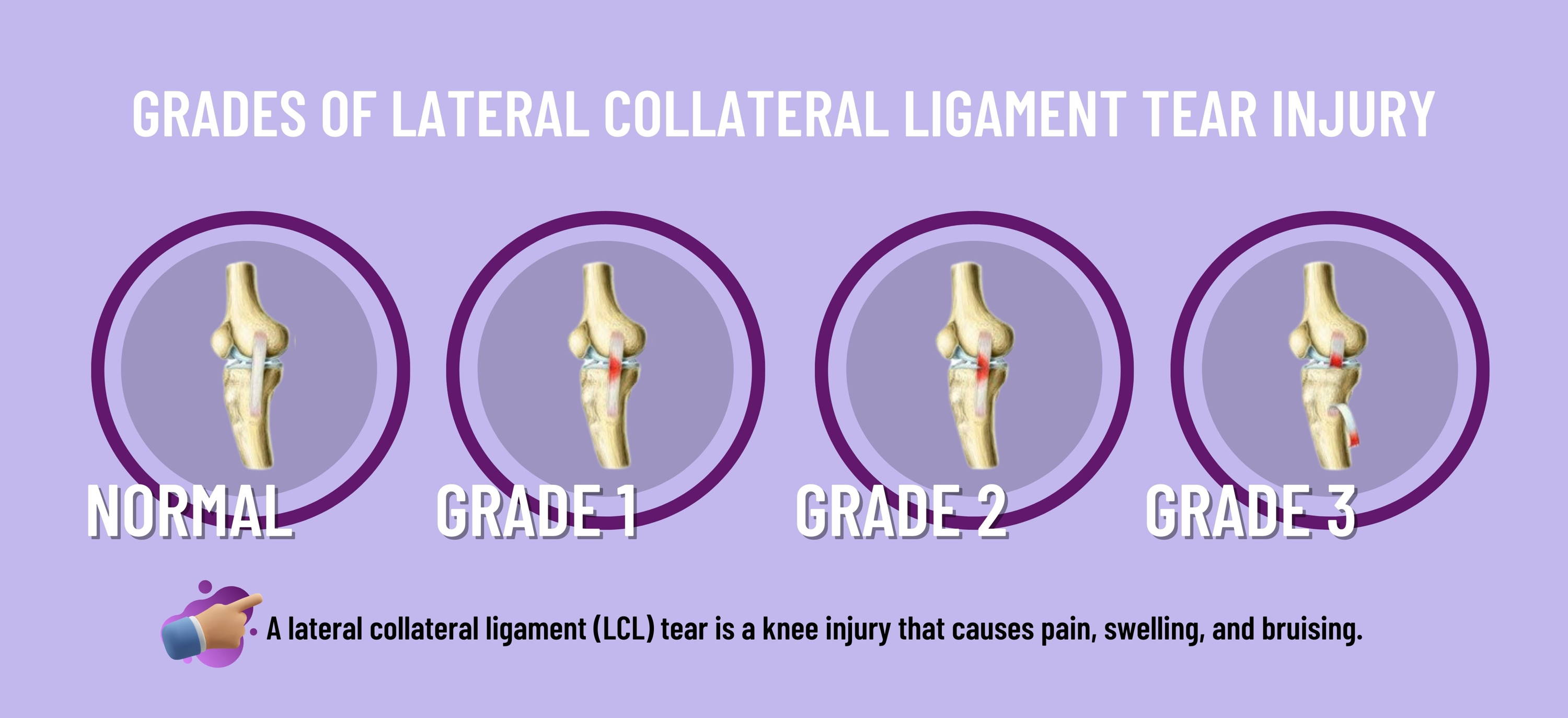
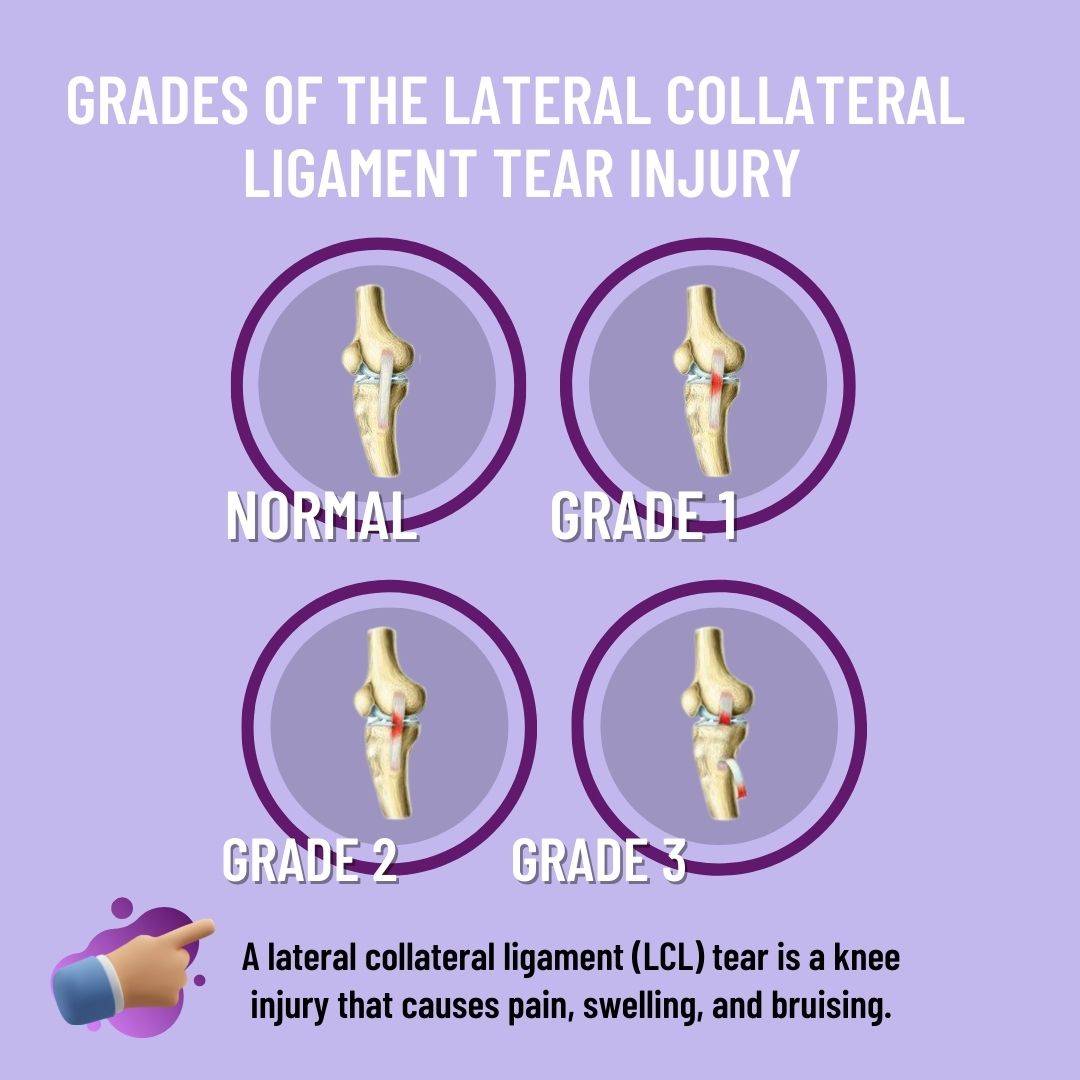
Mild or grade 1
Minor injuries might only require home therapy, as well as crutches for a short period. When your doctor says it's okay for you to put weight on your leg, you may need to wear a hinged knee brace. After approximately 3 to 4 weeks, many individuals can resume their regular activities.
Moderate or grade 2
Most people can resume an active lifestyle after 8 to 12 weeks of being injured. However, often there is residual pain in the affected area that needs attention with medication or therapy for relief from it before they return full force into their old activities again.
Severe or grade 3
Injuries to the knee can be quite serious, but they don't need to stop you from living an active lifestyle. You'll want a hinged brace for 6-8 weeks and depending on how bad it is will require wearing one until your knee ligament is fully or surgery may be necessary if there are severe injuries like torn cartilage (or meniscus). Most people have a full range of motion again within 8-12 weeks after being injured, so long as blood flow has not been affected by the damage done during traumatic events such as falls onto hard surfaces, which could cause bruising around the joint area leading up into this type of injury.
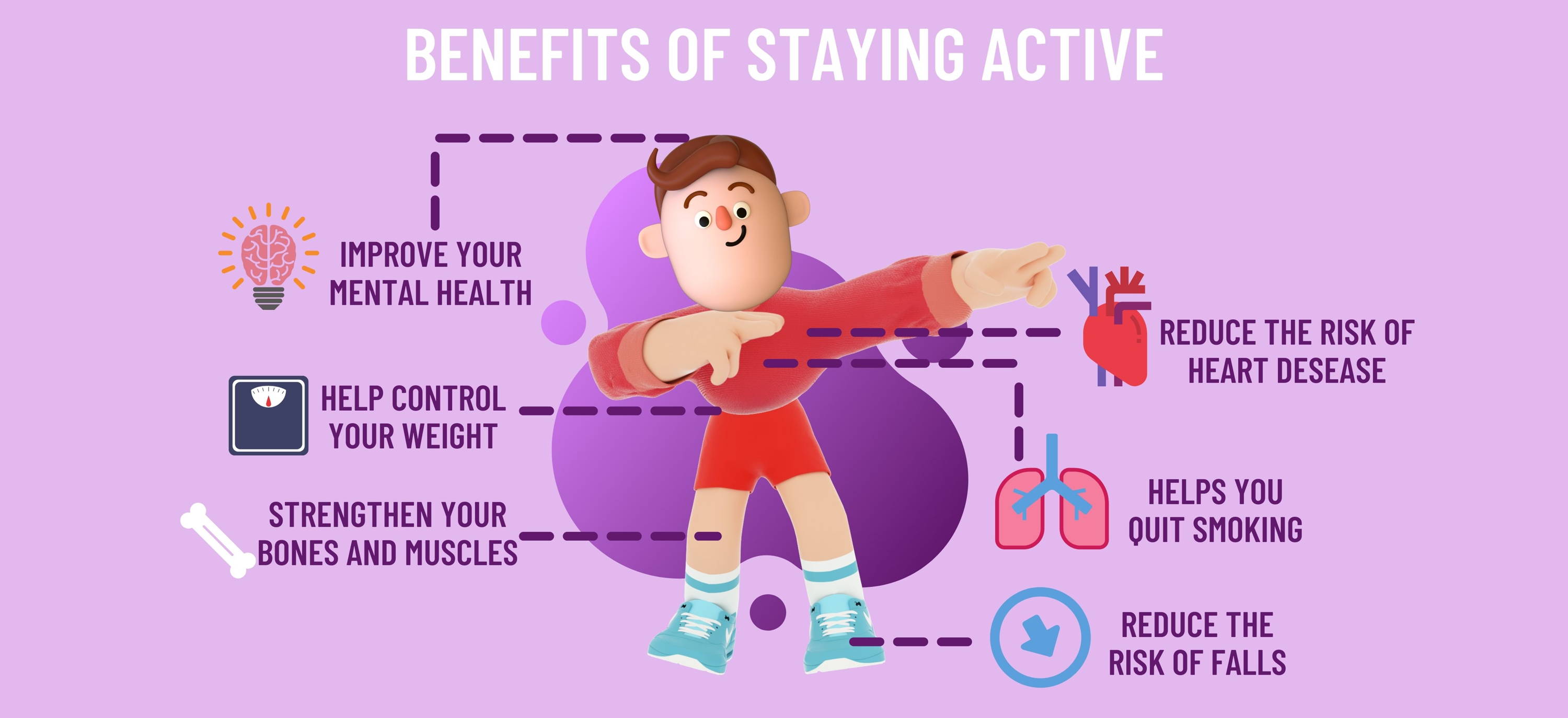
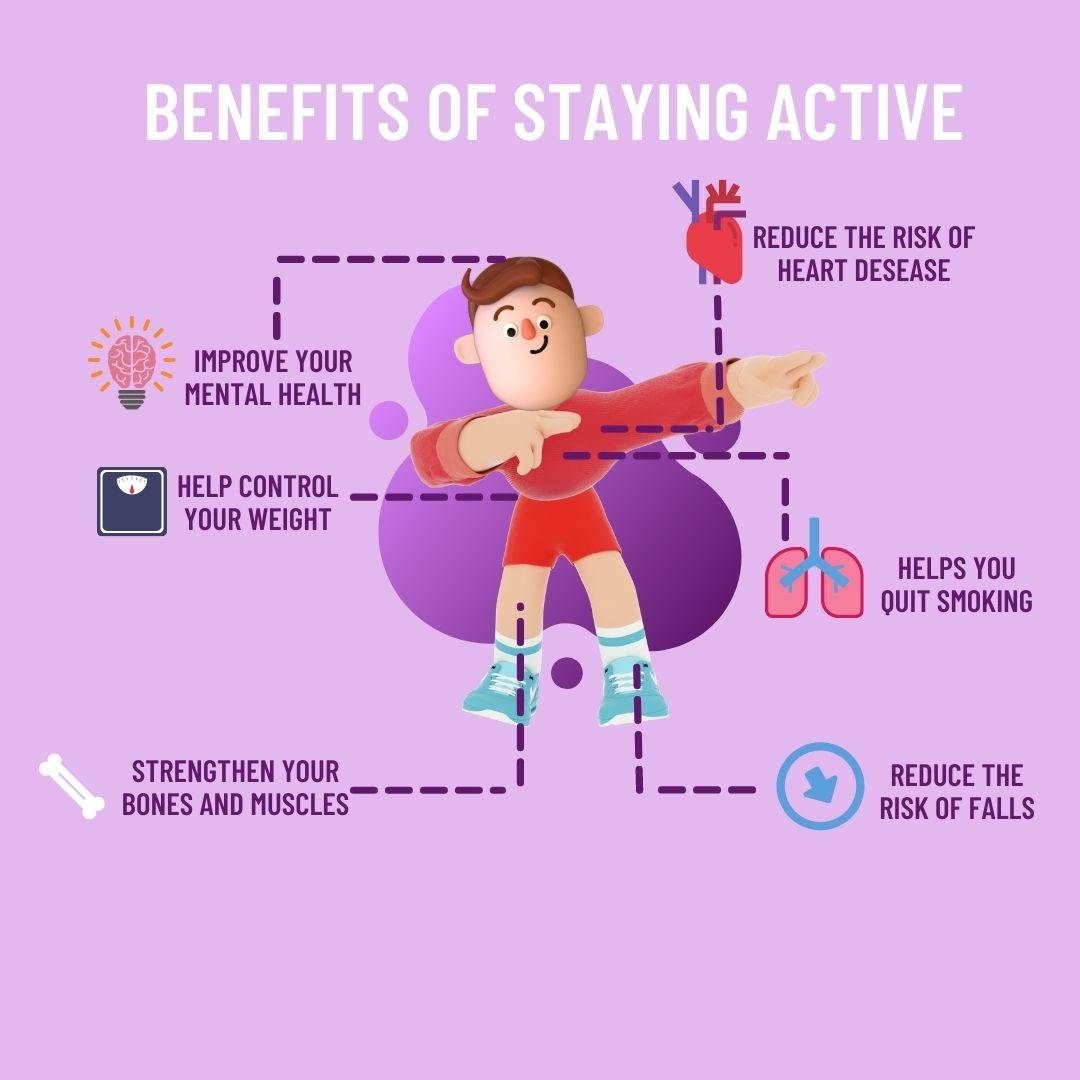
THE IMPORTANCE OF STAYING ACTIVE AND NOT LETTING YOUR INJURY SIDELINE YOU FROM RUNNING OR OTHER ACTIVITIES THAT INVOLVE MOVEMENT.
The importance of staying active and not letting your injury sideline you from running or other activities that involve movement can't be overstated. If it's been more than a few weeks, try getting back into some sort of sports with an exercise routine utilizing light weights to gradually increase muscle strength without putting unnecessary pressure on any particular area, which could eventually lead to inflammation in those regions if they remain unused too long following physical activity.
So, if you are struggling with an LCL injury and want to get back out there running again, be sure to take the time for some consideration before starting up. You may have other issues that need addressed or are just not ready yet! Remember that patience is key in getting back into running. It is strongly recommended to wear supportive shoes during all activities while continuing with exercises such as squats which strengthen muscles surrounding the knee joint use of Cocoon hot and cold compress therapy after the run of physical activity. To continue running, it is important that you take care of your injury and also maintain a baseline level of fitness by doing other workouts in addition to just running. By following these guidelines, you can get back out on the road and start running again soon!
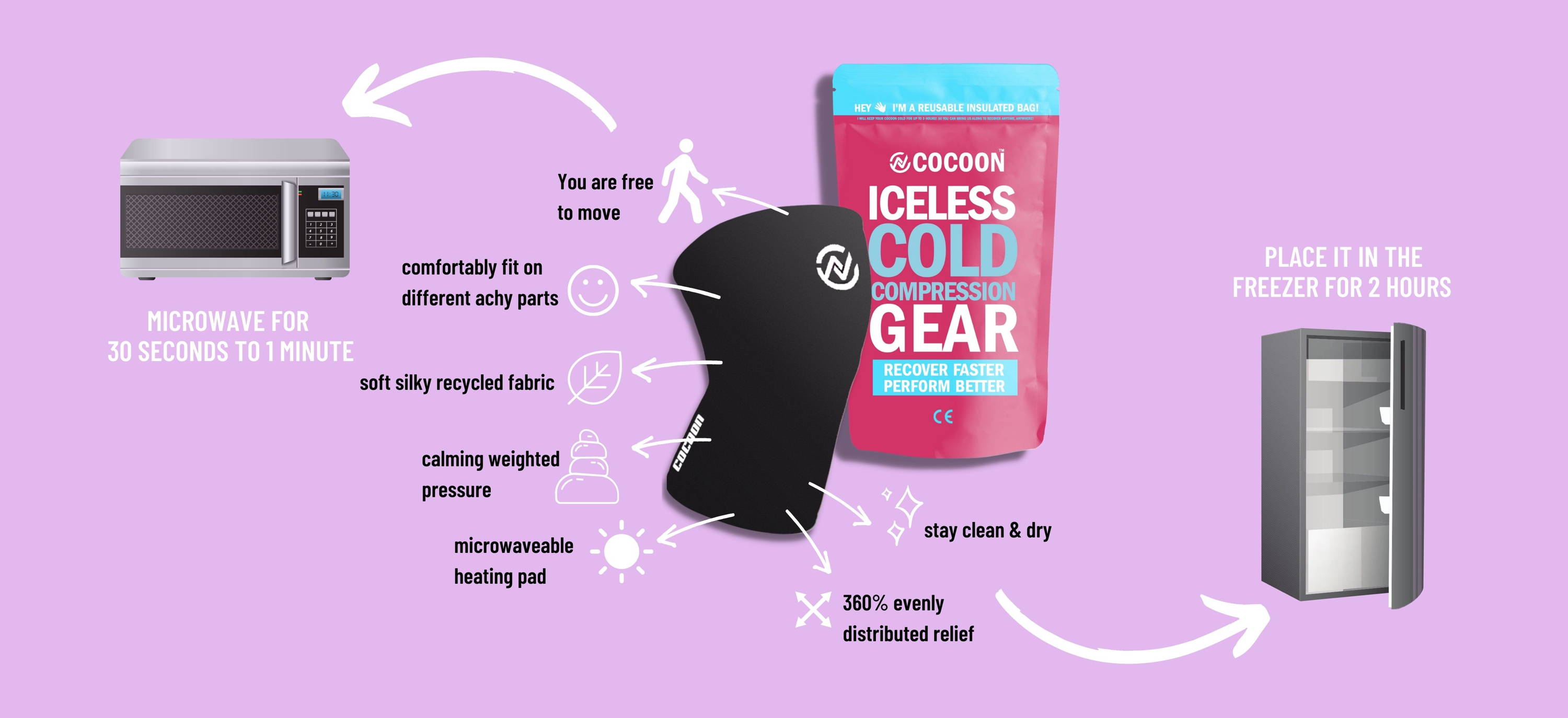
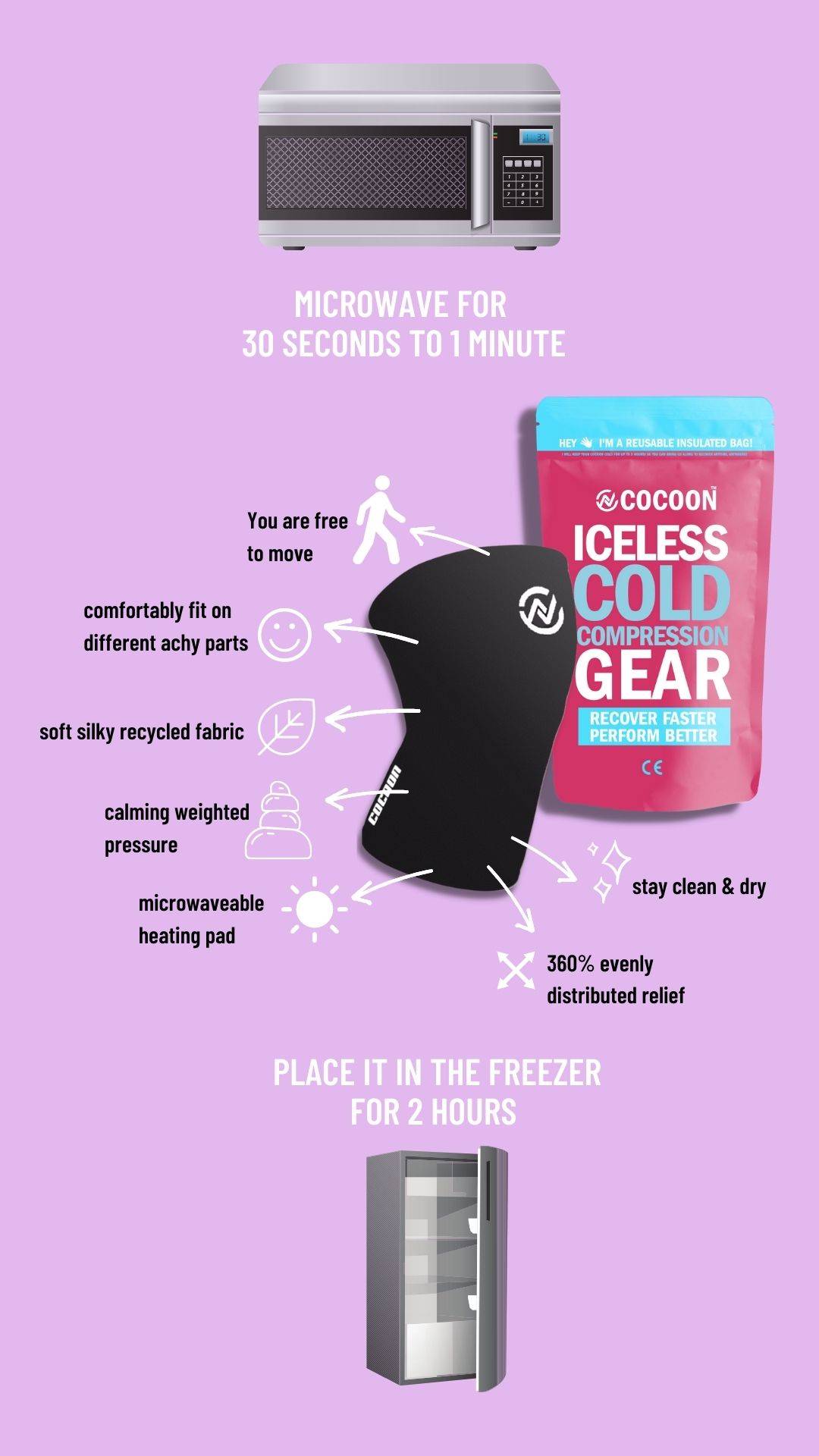
Meet Cocoons
The cocoon cold and hot compression, a prevention and recovery technique for runners. The compression provides increased blood flow, which helps to heal the injured LCL muscles as it keeps them from moving around while you wear your Cocoons!
With this special design of wrap that offers more comfort than traditional ones on the market today- plus an outstanding amount of pain relief, In no time, the runner will be back in form.

